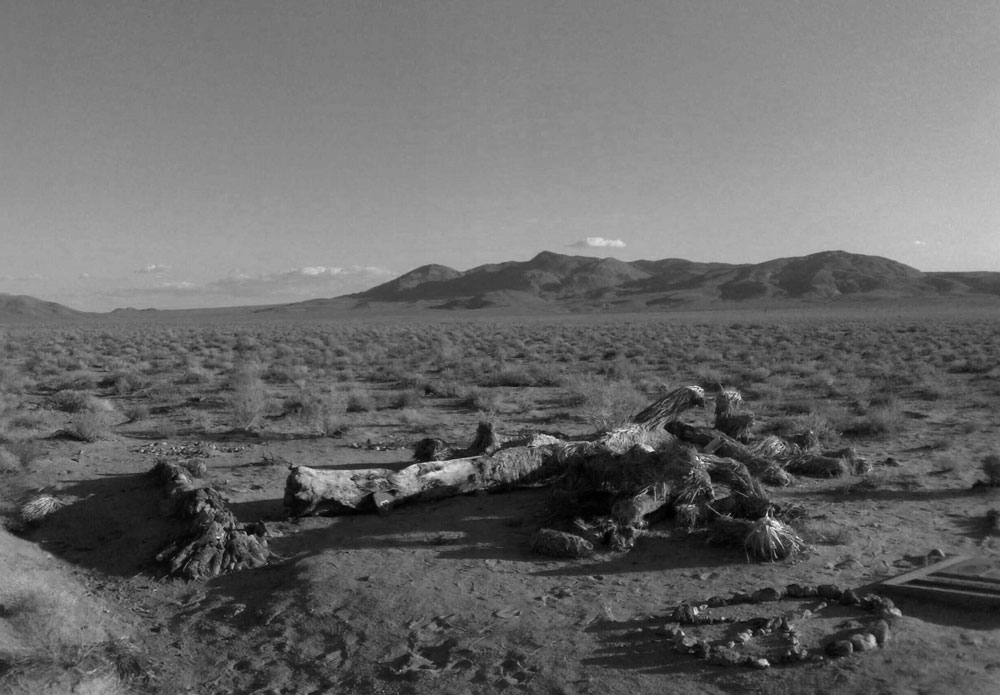Creating Multi-Narrative Topographies
Eden’s Edge explores the landscape by excavating and reinterpreting its underlying narratives as an organizational and meaning-producing layer of space. Landscape, like any other form of space, is perceived as a field of practices that is temporal and processual in nature and that forms an interrelationship with manifold cultures acting on it. People constantly rewrite and re-read the landscape and simultaneously are informed by these narratives. Within this understanding we are interested in how such knowledge can become useful for landscape design?

Narrative modes in space
In our project we investigate storytelling as one of the predominant human practices, and we critically trace different modes and methods of narration as they have evolved in different cultural fields. These educe particular practices and techniques, e.g. in the sciences, tourism, ecology, or the film industry, but also in everyday life, whereas landscapes are not perceived as narrative per se, but they comprise potential stories. They are “polysemous and paradoxical, representative and performative,”1 while simultaneously being part of networks and connected to other spaces and places through media, migrations, or global economic flows.
Our interest specifically lies in the potential transformative relationship between the story, the narrative act of storytelling, and the way stories are perceived and appropriated by different recipients and most importantly expressed by their practices.

Stories that form a part of space unfold their narration and potential only through the act of reading – moving through the space. In the Eden’s Edge project we focus on changing “single lines”2 within the given story fabric of the landscape. Reading space as text, and thus as a landscape of meaning, and ranging across a number of spaces, tracing their movements, serves as a potential way to not only uncover a hierarchy of contexts, but undo mythologies, grand narratives, and hegemonic language and overthrow dominant notions of power.
Such an undertaking cannot be accomplished by the expert/designer alone, but “many of us should try to decipher the city we are in, starting, if necessary, with a personal rapport. Dominating all these readings by different categories of readers (for we have a complete scale of readers, from the native to the stranger) we would thus work out the language of the city.”3
Practiced Place
Based on Michel de Certeau’s concept of walking in the city as a productive act of speaking or writing, the concept of the performative agent is of significant importance to the understanding of our own practices and representations, but also for understanding those of others. We regard space as “a practiced place,”4 produced by a number of different agents: human, non-human, discursive, conceptual, or material and physical.
What would Bakhtin do?
Michael Bakhtin’s idea of exploring the discourse of a novel to investigate how time-space relationships take on meaning within their compositional topography plays an important role in our approach. The application of this type of analysis to our own narratives as a research team, therefore, not only forms the starting point for our exploration but essentially points towards the exceptional capacity that Bakhtin’s approach provides to appropriate, investigate, and design contexts in which practices take place. The question of how such topography can best be described and applied forms the opening through which we enter our transdisciplinary field of research.
Bibliography:
Barthes, Roland. Semiology and the Urban. Lecture 1967 at the University of Naples. Published in Op.Cit., 10 (1967).
De Certeau Michel. The Practice of Everyday Life.
Parsons, Allan. Narrative Environments: How do they matter?, In Rhizomes: Cultural Studies in Emerging Knowledge (19) (2009).